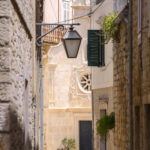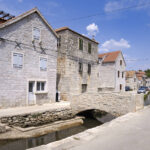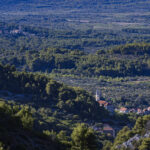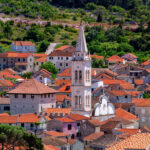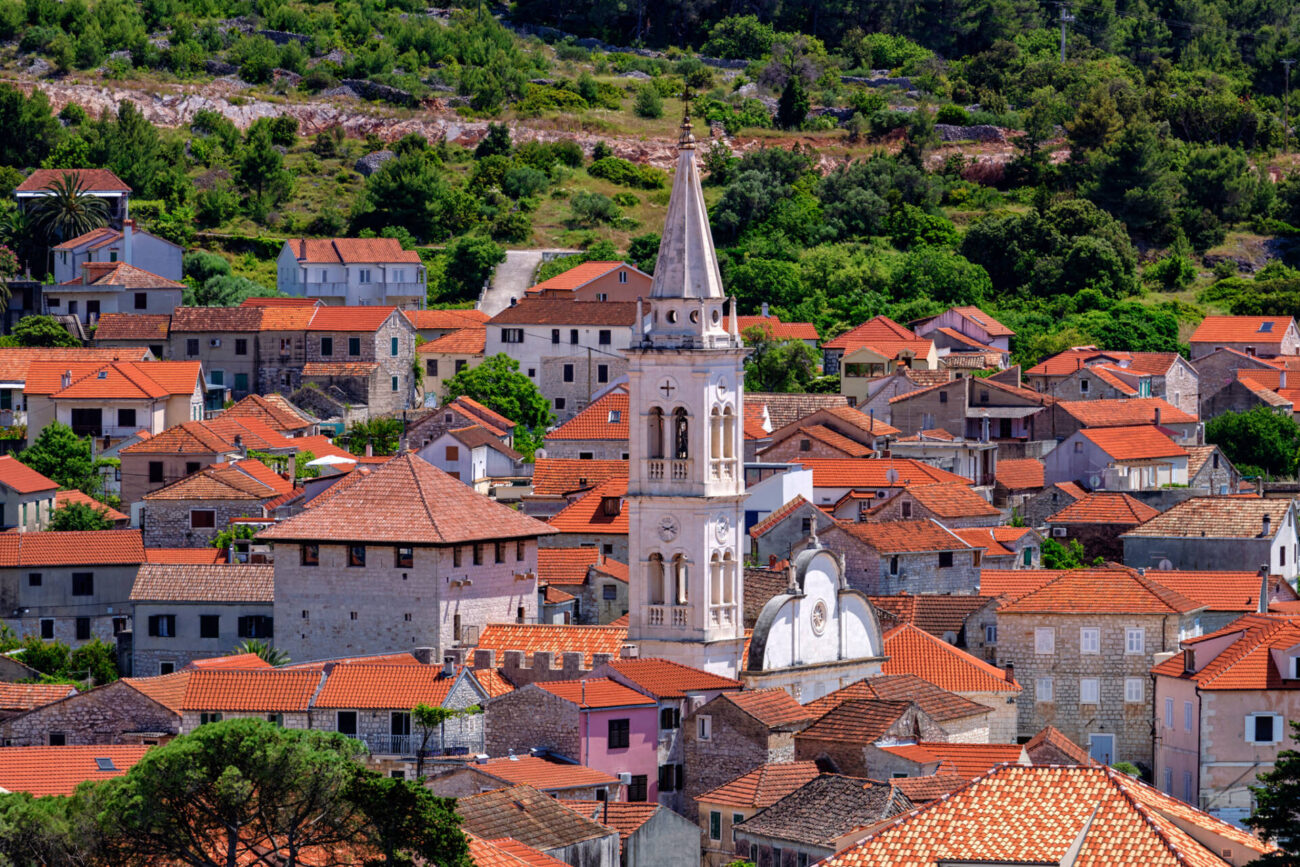
Interesting Facts About Hvar Island
Hvar is not just a pretty place with a nice climate for lazing around in. Natural beauty is just one part of its attractions, offering the luxuries of swimming in calm waters, peaceful walks by the sea or through the countryside, enjoying the sounds of birds, the sight and scents of the pine trees and aromatic plants, and the quiet stillness.
Then there are the restaurants, which offer a wide variety of local and some international dishes, and are increasingly catering for more specialized diets such as vegetarian and vegan. Extra virgin olive oil and fine wines are part of Hvar’s high quality gastronomic experience. For music lovers, there is beautiful a cappella singing, a particularly appealing Dalmatian tradition.
Hvar’s history is rich in events and achievements, which are reflected in its architecture and landscape. There are 936 nationally recognized monuments on the island, of which 725 are cultural monuments, 183 listed as natural monuments, and 28 listed as both.
Hvar Island’s name derives from the Greek ‘Pharos’, meaning ‘lighthouse’. The later Roman settlers altered the name to ‘Pharia’, which then became ‘Fara’ for the Dalmatian Romans. In the early Middle Ages, incoming Croatians transposed the letter ‘f’ into ‘hv’, which is how the name ‘Hvar’ came into being.
A smattering of things to know about Hvar:
- Hvar is probably the sunniest island in Croatia on the Adriatic.
- The local dialect name for Hvar is ‘For’
- The coastline extends for 270 km
- The island has some 11,500 residents
- It is divided into four administrative units: Jelsa, Hvar, Stari Grad and Sućuraj
- Hvar is considered one of the most beautiful islands in the world, and was voted the most beautiful in Europe by Condé Nast Traveller magazine readers in 2019 and in 2021.
- Stari Grad is the oldest town in Croatia, dating from 384 BCE
- Hvar has been the ‘Island of Wine’ since 384 BCE, and almost certainly prior to that.
- The first public indoor theatre was established in Hvar Town in 1612.
- The island has five separate entries in the UNESCO heritage listings.
- The Stari Grad Plain, which is on the World Heritage List as a Cultural Landscape, is the best preserved example of ancient field parcelization in the Mediterranean.
- The oldest drawing in Europe was found in the Grapčeva Cave near Humac on a ceramic fragment, purportedly of a boat, although some have interpreted it as an elephant.
- The first sea battle recorded in Croatian waters was fought off Hvar in ancient times.
- Hvar has been home to some of the greatest Croatian literary and musical figures, including Petar Hektorović, Hanibal Lucić and Antun Dobronić.
- ‘The Slave Girl’ (1530) by Hanibal Lucić is considered to be the first play to be written in Croatian, and one of the earliest European secular dramas.
- A people’s uprising was led by Matij Ivanić in 1510, 279 years before the French Revolution!
- In 1858 Croatia’s first meteorological station was opened on Hvar.
- In 1868 Hvar pioneered organised health tourism, possibly the first example of its kind in Europe.
- Hvar native Juan (Ivan) Vučetić (1858 – 1925) developed the techniques of Dactyloscopy (fingerprinting) in 1891
- Hvar native Grgo Novak (1888 – 1978) was one of Croatia’s most distinguished historians and archaeologists, who did much to uncover many treasured secrets from the island’s distant past.
- The first disco club in former Yugoslavia, the ‘Amfora’, was founded in Jelsa in 1964.
- Hvar Island has its own football league competition, the ‘Forska liga’.




